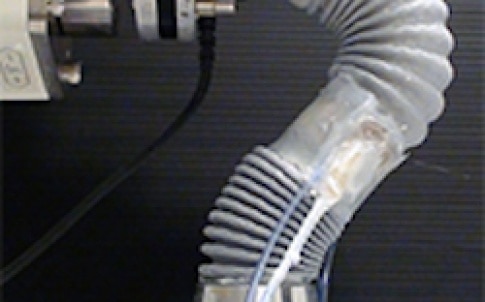The device, which mimics the behaviour of an octopus arm, has been designed to enable surgeons to easily access remote, confined regions of the body and, manipulate soft organs without damaging them.
According to its developers, a team from Sant’Anna School of Advanced Studies in Pisa, Italy the device could help reduce the number of instruments and entry incisions necessary in surgical operations, by using different parts of the arm to manipulate and operate on organs simultaneously.

Octopus arms have no rigid skeletal support and can easily adapt to the surrounding environment by twisting, changing their length or bending in any direction at any point along the arm. The octopus can also, however, vary the stiffness of its arms, temporarily transforming these flexible limbs into stiffened segments to allow the octopus to move and interact with objects.
To achieve the same effect in the robotic arm, the team constructed a device that was made from two interconnecting identical modules.
Each module can be made to move by the inflation of three cylindrical chambers that are equally spaced inside the module. By alternating and combining the inflation of the three chambers, the module can be made to bend and stretch in various directions.
The stiffness of the two modules can also be controlled by exploiting a ‘granular jamming phenomenon’ in which a flexible membrane inside the module is filled with a granular media. When a vacuum is applied to the membrane, its density increases and the whole membrane becomes rigid.
In their study, the researchers performed a number of characterisation tests on the robotic device, showing that it could bend to angles of up to 255° and stretch to up to 62 percent of its initial length. The stiffening mechanism was able to provide stiffness increases from 60 percent up to 200 percent.
”Traditional surgical tasks often require the use of multiple specialised instruments such as graspers, retractors, vision systems and dissectors, to carry out a single procedure,” said lead author of the study Dr Tommaso Ranzani.
”We believe our device is the first step to creating an instrument that is able to perform all of these tasks, as well as reach remote areas of the body and safely support organs around the target site.”





Nanogenerator consumes CO2 to generate electricity
Nice to see my my views being backed up by no less a figure than Sabine Hossenfelder https://youtu.be/QoJzs4fA4fo